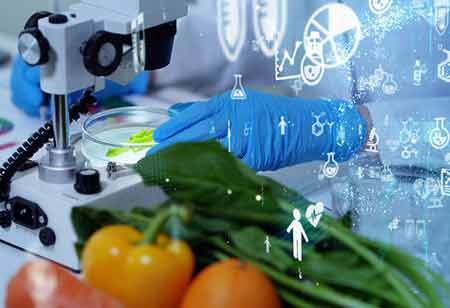Thank you for Subscribing to Food Business Review Weekly Brief
- Home
- Topics
- Alternative Proteins and Plant Based Food
- Beer and Wine
- Canned Beverages
- Coffee And Tea
- Food and Beverage Consulting
- Food and Beverage Financial Service
- Food And Beverages Marketing
- Food Distributors
- Food Ingredients
- Food Sustainability
- Plant Based Food and Beverages
- Seafood Suppliers
- Supplement Manufacturing
- Wine Investment
- News
- Vendor Viewpoint
- CXO Insights
- Conferences
- Newsletter
- CXO Awards
-
Location Tech effect and improvement in the field of food Delivery Apps
Food delivery services have come a long way, and as customer's demand for instant satisfaction has increased

By
Food Business Review | Friday, October 29, 2021
Stay ahead of the industry with exclusive feature stories on the top companies, expert insights and the latest news delivered straight to your inbox. Subscribe today.

Food delivery companies are investing more and more money into technology to stay ahead of the curve, with location technology being the main investment area.
Fremont, CA: Food delivery services have come a long way, and as customer's demand for instant satisfaction has increased, so has the sophistication and variety of food delivery services— 86 percent of consumers now order monthly, and the takeaway delivery market in the UK has doubled from £2.5 billion (US$3.14 billion) to £4.3 billion (US$5.5 billion) in 2018, reflecting a 73 percent raise.
This plenty of choice is great for consumers, but it means solid competition for industry players. This results in food delivery companies adding more and more money to technology to stay ahead of the race, with location technology being a prime investment area.
Technology advancements
Many ride-hailing and food-delivery companies lean on GPS technology to find routes and points of interest, and this well-established technology is still improving.
The Australian government, for instance, has begun a US$13 million project to improve Precise Point Positioning (PPP) using a Satellite-Based Augmentation System (SBAS) and extend GNSS positioning.
Cost-effectiveness
Location technology depends on data transmission from various sources for positioning and location recognition. For example, food distribution companies depend on area technology to improve efficiency and profits. Location technologies can efficiently join real-time road data and granular map information through plot distributing routers.
Food delivery partners may use this data to clear their routes, delivering in the shortest time possible and increasing precision at drop-off and pick-up points. Reduced time for each successful delivery is a favorable outcome in an industry that calculates profitability per unit of time.






